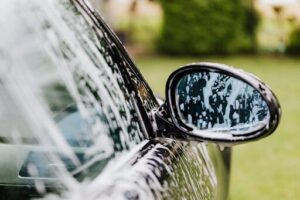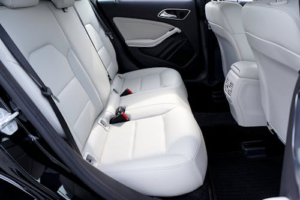What is the difference between buffing and polishing? Buffing and polishing are two terms that are frequently used when discussing how to maintain an automobile’s paint job or bring back the luster of different surfaces. What is the difference between buffing and polishing Although buffing and polishing are often used interchangeably, they are actually separate procedures with different equipment, methods, and outcomes. You can take better care of your car, furniture, and metal surfaces if you know the difference between buffing and polishing. This post will explain the differences between buffing and polishing as well as when to apply each technique.
Buffing: What is it?
Buffing is a finishing technique that smoothes out surface flaws using a buffing pad or rotary machine. Particularly in vehicle detailing, it is commonly used to remove small paint flaws, oxidation, swirl marks, and scratches from surfaces.
Depending on the pad and compound type, buffing can be either abrasive or non-abrasive. Buffing is frequently used in paint treatment procedures for cars to bring back the depth and clarity of fading or damaged paint.
Buffing Types:
Cutting buffing is the process of removing deeper flaws, including severe oxidation or deeper scratches, using strong compounds and pads.
Finishing buffing: After cutting, the surface is refined using softer pads and finer compounds to produce a smoother, glossier finish.
Tools Used in Buffing:
Buffing instruments include dual-action polishers and rotating buffers.
- Pads made of foam or wool
- Compounds for buffing
What is polishing?
Polishing is a technique that evens up the finish and minimizes tiny scratches to increase a surface’s sheen. Polishing, as opposed to buffing, is less harsh and concentrates more on surface refinement to increase gloss and reflectivity than on eliminating noticeable flaws.
For a high-gloss, mirror-like surface, polishing is frequently used after buffing. Other industries, such as floor care, metalworking, and woodworking, also frequently use polishing.
Polishing types include:
Device Polishing: To improve gloss, use an electric polisher with a soft pad and polish solution. A less forceful technique, hand polishing is usually applied for minor surface upkeep and improvement.
Polishing Tools:
- rotary or orbital polishers
- Microfiber or foam cushions
- liquids or pastes for polishing

What is the difference between buffing and polishing
Although both buffing and polishing are methods of surface refinement, their functions and degrees of abrasiveness differ. In general, buffing is a more forceful procedure used to get rid of deeper surface flaws like oxidation, swirl marks, and scratches. When considerable correction is required, it is commonly utilized in surface repair and car detailing operations.
Polishing, On the other hand, it is a less harsh technique that is mostly used to improve the smoothness and shine of surfaces. It is usually used as a final step to increase shine and surface clarity and concentrates on aesthetic enhancement rather than correction.
Each technique also uses different tools and materials. Rotating equipment, cutting pads, and chemicals made to remove defects are frequently used for buffing. Polishing, on the other hand, uses finer polishes and softer foam or microfiber pads to provide a polished, glossy finish. For a detailed technical comparison, see this guide by Meguiar’s.
When a surface needs to be restored due to obvious wear or damage, buffing is the best option from an application perspective. Surfaces that require aesthetic improvement but are currently in good condition are the greatest candidates for polishing. To achieve the best results, both techniques are frequently applied simultaneously: buffing for correction and polishing for refinement.
When Is the Right Time to Buff a Surface?
Buffing is best when there is obvious damage to your vehicle or surface, like:
- Automatic car wash swirl marks
- Paint fading and oxidation
- Small scrapes and scratches
- uneven texture of the surface
Buffing is more of a healing technique designed to revitalize worn-out or damaged surfaces. Because poor buffing might burn through the paint or clear coat, it is advised to have buffing done professionally or by someone with the necessary training.
When Is the Right Time to Polish a Surface?
The ideal time to polish is as a last step in maintenance or detailing, particularly when:
- The surface is already spotless and devoid of significant flaws.
- You wish to increase gloss and shine.
- You’re getting ready to seal or wax the surface.
Because polishing improves the finish without removing a lot of material and is kinder to the paint, it is typically done more regularly than buffing.
Which Is Necessary, Polishing or Buffing?
Buffing is probably the best way to make your car or surface look better if it appears worn out, dull, or scratched. Polishing, on the other hand, will work well if the surface is already in good shape and all you want to do is preserve the finish or add shine.
Both techniques are frequently applied consecutively in detailed procedures:
- Buffing to make the surface better
- Polishing to improve and polish the finished look
Final Thoughts: What is the difference between buffing and polishing?
What is the difference between buffing and polishing In a nutshell, polishing is a finishing step, while buffing is a corrective one. While polishing increases gloss, buffing eliminates flaws. Both are necessary to achieve that ideal showroom-quality finish and play a significant part in surface upkeep.
Knowing the difference between buffing and polishing will help you select the best method for your needs, whether you’re detailing an automobile, restoring antique furniture, or preserving metal surfaces.







